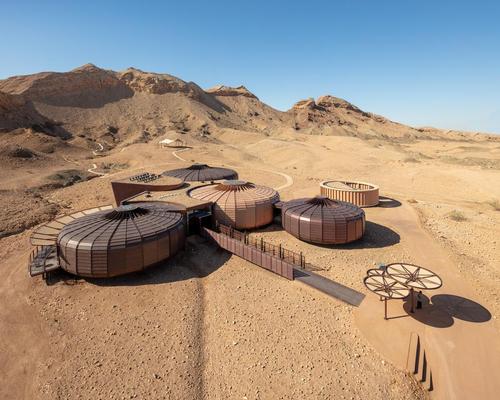27 Jan 2020
Sea urchins inspire pod designs for new Buhais Geology Park
BY Stu Robarts

The Buhais Geology Park Interpretive Centre, with a Hopkins Architects design inspired by fossilised sea urchins, has opened in the United Arab Emirates.
The centre is part of the new Buhais Geology Park, which is located on the al-Madam Plain approximately 30mi (50km) from the city of Sharjah.
Although now desert, the site used to be a seabed and has an abundance of marine fossils from over 65 million years ago, as well as burial sites from the Stone, Bronze and Iron Ages.
"Rarely is an architect offered the opportunity to design a building for such a beautifully barren landscape with so much geological and cultural significance," said Simon Fraser, principal and lead designer at Hopkins Architects.
With that in mind, part of the challenge for Hopkins was to minimise disruption to the existing fauna, geology and terrain, which they achieved by creating relatively small structures that did not require significant foundational work and were prefabricated off-site.
The structures themselves take the form of five interconnected pods of varying sizes – housing exhibition spaces, an immersive theatre, a café with panoramic views, a gift shop and other visitor facilities – and a sixth, unconnected service pod.
The pods are coloured with hues of the surrounding landscape and the patterns of their steel cladding, coupled with their circular shapes, recall the urchins on which they are based.
They are linked by an outdoor trail that also incorporates viewing areas, a canopy-shaded classroom and walkways above rock formations and ancient burial grounds.
"Our ‘light touch’ approach references the site’s marine fossils by delivering a series of ‘urchin’ pods that sit cleanly on the ground and seek to become a part of the local environment," said Fraser.
"We are confident that this exciting new facility will encourage many people from all over the world to understand the way in which landscapes are formed by tectonic activities and how the Earth has changed over time."
Close Window